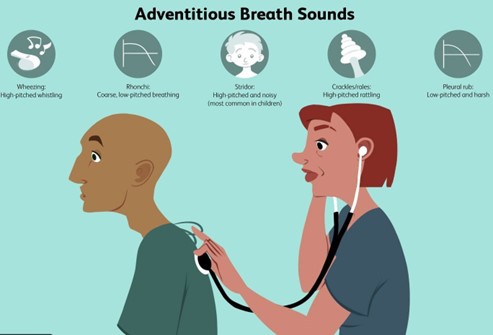The nurse would document which of the following as objective data obtained during a patient assessment?
Report of scalp itching each evening
Loss of hair on bilateral legs
Patient description of pain in an extremity
Complaint of numbness on the right hand,
The Correct Answer is B
Objective data refers to measurable and observable information gathered during a patient assessment, such as physical signs, laboratory values, and other measurable data. In this case, the loss of hair on bilateral legs can be observed and measured, making it an objective finding. Options a, c, and d are all subjective data as they rely on the patient's report or description of their symptoms, which cannot be directly observed or measured.
Nursing Test Bank
Naxlex Comprehensive Predictor Exams
Related Questions
Correct Answer is ["A"]
Explanation
To map the client's abdomen into four quadrants, the nurse should use the umbilicus as the landmark to perform this assessment. The abdomen is divided into four quadrants by drawing an imaginary line from the center of the umbilicus to the pubic symphysis and another line from the center of the umbilicus to the xiphoid process of the sternum. This helps in identifying the location of any potential abdominal discomfort or tenderness.
Correct Answer is B
Explanation
Auscultating breath sounds is an essential component of a respiratory assessment. The following breath sounds can be heard during auscultation: Vesicular, Bronchial, Bronchovesicular, Crackles, Wheezes, and Rhonchi.
Vesicular sounds at the apex of the lungs (a) and vesicular sounds at the base of the lungs on the posterior chest (c) are normal findings. Vesicular sounds are soft and low-pitched, heard during inspiration, and are indicative of air moving through small airways and alveoli. The vesicular sounds are louder at the base of the lungs, where there is more alveolar tissue.
Rhonchi that disappear with coughing (d) can be normal or abnormal findings. Rhonchi are low-pitched, continuous sounds that are heard during inspiration and expiration. They are produced by the movement of air through narrowed or obstructed airways. If the rhonchi disappear with coughing, it may indicate that the airway has cleared.
Wheezes on inspiration (b) are abnormal findings and require prompt follow-up. Wheezes are high-pitched, whistling sounds heard during inspiration and expiration. They are indicative of air moving through narrowed airways and can be a sign of an underlying respiratory condition such as asthma, chronic obstructive pulmonary disease (COPD), or bronchitis. Prompt follow-up is necessary to diagnose and manage the underlying condition.

Whether you are a student looking to ace your exams or a practicing nurse seeking to enhance your expertise , our nursing education contents will empower you with the confidence and competence to make a difference in the lives of patients and become a respected leader in the healthcare field.
Visit Naxlex, invest in your future and unlock endless possibilities with our unparalleled nursing education contents today
Report Wrong Answer on the Current Question
Do you disagree with the answer? If yes, what is your expected answer? Explain.
Kindly be descriptive with the issue you are facing.
